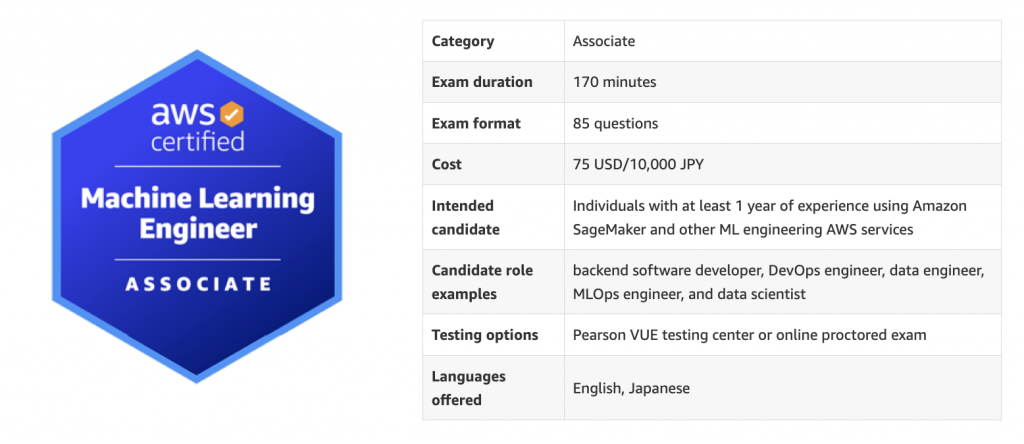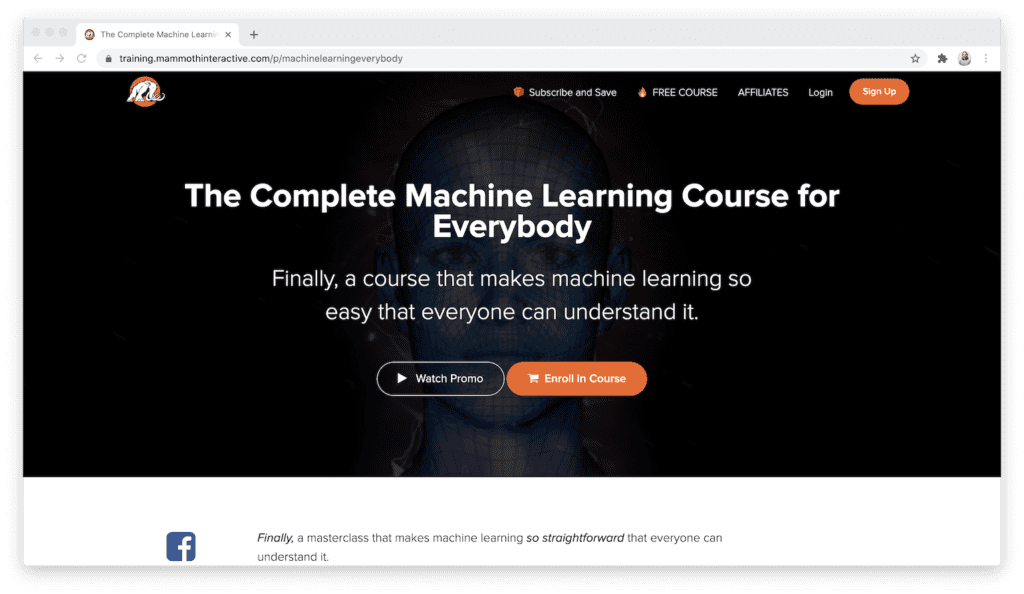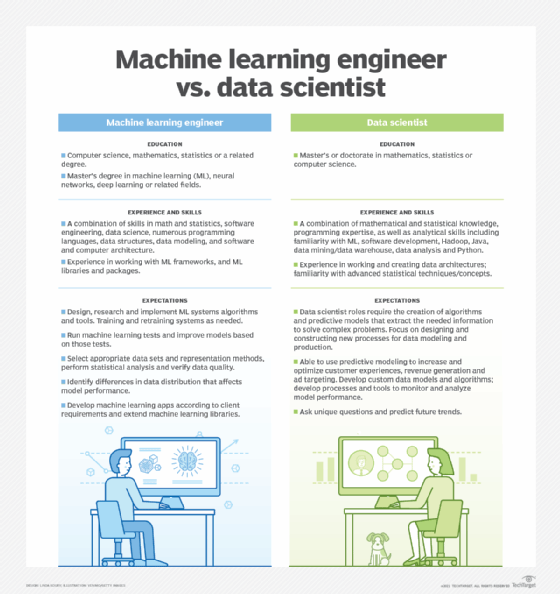All Categories
Featured
Table of Contents
- – The Buzz on Machine Learning
- – The Main Principles Of Machine Learning Engine...
- – 7 Best Machine Learning Courses For 2025 (Rea...
- – The 2-Minute Rule for How To Become A Machine...
- – The 5 Best + Free Machine Learning Engineeri...
- – Things about Advanced Machine Learning Course
- – The Machine Learning Developer PDFs
Some individuals assume that that's cheating. Well, that's my entire career. If someone else did it, I'm going to utilize what that person did. The lesson is placing that apart. I'm requiring myself to analyze the possible solutions. It's even more about consuming the web content and attempting to apply those ideas and less regarding locating a collection that does the job or searching for someone else that coded it.
Dig a little bit deeper in the math at the start, simply so I can construct that structure. Santiago: Ultimately, lesson number 7. I do not think that you have to understand the nuts and screws of every formula before you use it.
I've been using semantic networks for the longest time. I do have a sense of just how the gradient descent functions. I can not clarify it to you today. I would certainly have to go and check back to actually obtain a far better instinct. That doesn't mean that I can not address things making use of neural networks? (29:05) Santiago: Attempting to require individuals to assume "Well, you're not mosting likely to achieve success unless you can describe every solitary detail of just how this works." It goes back to our sorting instance I think that's just bullshit advice.
As an engineer, I have actually dealt with many, numerous systems and I have actually used several, several points that I do not understand the nuts and bolts of exactly how it works, despite the fact that I recognize the impact that they have. That's the last lesson on that particular thread. Alexey: The amusing thing is when I think of all these collections like Scikit-Learn the algorithms they use inside to apply, as an example, logistic regression or something else, are not the very same as the formulas we study in device discovering courses.
The Buzz on Machine Learning
So also if we tried to find out to obtain all these essentials of artificial intelligence, at the end, the algorithms that these collections use are different. ? (30:22) Santiago: Yeah, definitely. I think we need a great deal more pragmatism in the market. Make a great deal even more of an impact. Or concentrating on supplying worth and a little much less of purism.
By the means, there are 2 different paths. I usually talk with those that wish to function in the market that wish to have their influence there. There is a course for researchers and that is completely different. I do not risk to mention that due to the fact that I don't understand.
Right there outside, in the sector, materialism goes a long way for certain. Santiago: There you go, yeah. Alexey: It is a great inspirational speech.
The Main Principles Of Machine Learning Engineers:requirements - Vault
One of the things I wanted to ask you. First, allow's cover a pair of points. Alexey: Let's begin with core tools and structures that you require to learn to actually change.
I recognize Java. I understand just how to make use of Git. Maybe I understand Docker.
Santiago: Yeah, definitely. I assume, number one, you ought to start learning a little bit of Python. Considering that you already recognize Java, I do not think it's going to be a huge transition for you.
Not because Python coincides as Java, yet in a week, you're gon na obtain a great deal of the differences there. You're gon na be able to make some progress. That's number one. (33:47) Santiago: Then you get specific core devices that are going to be utilized throughout your entire profession.
7 Best Machine Learning Courses For 2025 (Read This First) - The Facts
You get SciKit Learn for the collection of device knowing algorithms. Those are devices that you're going to have to be making use of. I do not suggest just going and learning about them out of the blue.
Take one of those training courses that are going to start presenting you to some issues and to some core concepts of maker learning. I do not keep in mind the name, however if you go to Kaggle, they have tutorials there for totally free.
What's great about it is that the only requirement for you is to know Python. They're mosting likely to offer an issue and tell you how to make use of choice trees to address that details problem. I believe that procedure is extremely effective, because you go from no machine learning history, to comprehending what the trouble is and why you can not solve it with what you recognize now, which is straight software program engineering techniques.
The 2-Minute Rule for How To Become A Machine Learning Engineer (With Skills)
On the other hand, ML engineers focus on structure and deploying machine learning versions. They concentrate on training versions with information to make forecasts or automate jobs. While there is overlap, AI engineers handle more diverse AI applications, while ML designers have a narrower concentrate on machine discovering formulas and their functional application.

Machine understanding engineers concentrate on developing and deploying artificial intelligence designs right into production systems. They service engineering, making certain designs are scalable, efficient, and integrated into applications. On the various other hand, data scientists have a more comprehensive function that consists of data collection, cleansing, exploration, and building models. They are commonly in charge of drawing out understandings and making data-driven decisions.
As organizations significantly adopt AI and equipment learning innovations, the demand for knowledgeable professionals expands. Artificial intelligence designers service advanced projects, add to advancement, and have competitive salaries. Success in this field needs continual understanding and keeping up with evolving modern technologies and techniques. Artificial intelligence functions are generally well-paid, with the possibility for high making potential.
ML is basically different from standard software application advancement as it concentrates on teaching computer systems to find out from information, as opposed to programs specific policies that are carried out methodically. Unpredictability of results: You are possibly used to creating code with predictable outcomes, whether your function runs when or a thousand times. In ML, however, the results are less specific.

Pre-training and fine-tuning: Exactly how these versions are educated on huge datasets and after that fine-tuned for particular tasks. Applications of LLMs: Such as message generation, belief evaluation and info search and retrieval. Papers like "Focus is All You Need" by Vaswani et al., which introduced transformers. On-line tutorials and courses focusing on NLP and transformers, such as the Hugging Face course on transformers.
The 5 Best + Free Machine Learning Engineering Courses [Mit Statements
The ability to handle codebases, combine adjustments, and deal with problems is equally as vital in ML advancement as it remains in conventional software program tasks. The abilities developed in debugging and testing software applications are extremely transferable. While the context may transform from debugging application reasoning to determining concerns in information handling or version training the underlying principles of systematic investigation, hypothesis testing, and iterative improvement coincide.
Artificial intelligence, at its core, is heavily dependent on statistics and chance concept. These are essential for understanding just how formulas find out from data, make forecasts, and evaluate their performance. You ought to consider coming to be comfy with principles like statistical importance, circulations, hypothesis screening, and Bayesian thinking in order to layout and interpret models successfully.
For those curious about LLMs, an extensive understanding of deep understanding architectures is beneficial. This includes not only the mechanics of semantic networks yet additionally the design of details models for various use cases, like CNNs (Convolutional Neural Networks) for photo handling and RNNs (Frequent Neural Networks) and transformers for sequential data and all-natural language handling.
You should know these issues and learn strategies for recognizing, mitigating, and connecting concerning prejudice in ML designs. This includes the prospective effect of automated decisions and the ethical ramifications. Numerous models, particularly LLMs, require considerable computational sources that are typically provided by cloud platforms like AWS, Google Cloud, and Azure.
Building these abilities will certainly not just help with an effective transition right into ML but also guarantee that developers can contribute successfully and sensibly to the innovation of this vibrant field. Theory is crucial, yet absolutely nothing beats hands-on experience. Begin working on jobs that allow you to apply what you've found out in a functional context.
Take part in competitions: Join systems like Kaggle to get involved in NLP competitors. Develop your tasks: Start with basic applications, such as a chatbot or a text summarization device, and slowly raise complexity. The field of ML and LLMs is quickly advancing, with new breakthroughs and technologies arising routinely. Staying updated with the most up to date research study and patterns is important.
Things about Advanced Machine Learning Course
Join neighborhoods and online forums, such as Reddit's r/MachineLearning or community Slack networks, to review ideas and obtain advice. Attend workshops, meetups, and seminars to link with various other professionals in the area. Add to open-source projects or create post regarding your knowing trip and projects. As you gain competence, begin trying to find chances to integrate ML and LLMs right into your work, or seek brand-new roles concentrated on these technologies.

Vectors, matrices, and their function in ML algorithms. Terms like design, dataset, functions, tags, training, inference, and validation. Information collection, preprocessing strategies, design training, assessment processes, and implementation considerations.
Choice Trees and Random Forests: Intuitive and interpretable versions. Matching issue types with suitable models. Feedforward Networks, Convolutional Neural Networks (CNNs), Recurring Neural Networks (RNNs).
Data circulation, improvement, and attribute engineering strategies. Scalability concepts and efficiency optimization. API-driven approaches and microservices integration. Latency monitoring, scalability, and variation control. Constant Integration/Continuous Deployment (CI/CD) for ML operations. Version surveillance, versioning, and efficiency monitoring. Spotting and dealing with modifications in design performance with time. Addressing efficiency bottlenecks and resource monitoring.
The Machine Learning Developer PDFs

You'll be introduced to three of the most pertinent elements of the AI/ML technique; overseen understanding, neural networks, and deep knowing. You'll understand the distinctions between typical programming and device learning by hands-on growth in supervised understanding before constructing out complex distributed applications with neural networks.
This course functions as a guide to device lear ... Program More.
Table of Contents
- – The Buzz on Machine Learning
- – The Main Principles Of Machine Learning Engine...
- – 7 Best Machine Learning Courses For 2025 (Rea...
- – The 2-Minute Rule for How To Become A Machine...
- – The 5 Best + Free Machine Learning Engineeri...
- – Things about Advanced Machine Learning Course
- – The Machine Learning Developer PDFs
Latest Posts
Back-end Engineering Interview Guide – What To Expect
Netflix Software Engineer Hiring Process – Interview Prep Tips
How To Create A Study Plan For A Software Engineering Technical Interview
More
Latest Posts
Back-end Engineering Interview Guide – What To Expect
Netflix Software Engineer Hiring Process – Interview Prep Tips
How To Create A Study Plan For A Software Engineering Technical Interview